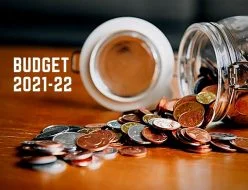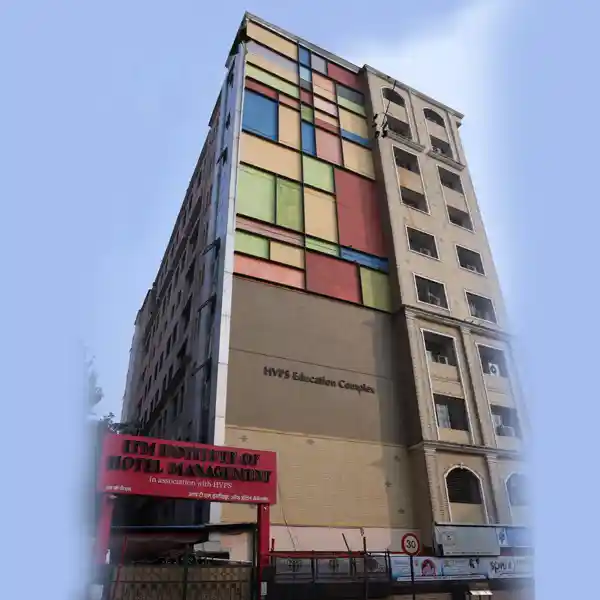8,000+
Students Trained & Placed
1,00,000+
Sq.Ft.of training area
45,000+
Worldwide Alumni Network
7
Kitchen Training Facility
₹ 60 Lakhs
UP to Scholarships
100%
Placement Assistance
International & National Internships only at 5-star Properties
One to One Corporate Mentorship
An Entrepreneurial Culture at the Campus
Budget 2021-22 comes at a time when the global economy is in a free-fall due to Covid-19. What’s really reassuring is the fact that the Indian economy is not so much export-dependent. Another good thing that saves us from acute recession is the significant contribution of the agricultural sector to the economy. Because of these reasons, India has been able to ward off a deep economic crisis and present a budget that is forward-looking and growth-oriented.
Key Points
For Poll-bound West Bengal
- West Bengal which goes to polls later this year has got some favorable treatment in the budget 2021-22. For example, the Centre has sanctioned Rs 95,000 crore for road development and Rs 1000 crore for the development of tea gardens.
- West Bengal will see the coming up of 675 km of new National Highways. Overall, the government aims to complete 11,000 km of national highway.
Infra
- The Indian Railways has got Rs 1.10 lakh crore in the budget out of which Rs 1.7 lakh crore will be spent as capital expenditure.
- Budget proposes central funding for Bangalore Metro, Chennai Metro, Nagpur Metro, Nashik Metro, Kochi Metro.
- Rs. 3.05 lakh crore has been allocated to the power sector and 100 new cities have been planned to be linked by the Gas distribution network.
- A new gas pipeline project has been sanctioned for Jammu and Kashmir.
Banking
- Government will infuse Rs 20,000 crore in public sector banks.
- Disinvestment target for 2021-22 is Rs 1.75 lakh crore. Two public sector banks and a one general insurance company is likely to undergo disinvestment.
- The government plans to sell parts of its holding in LIC through an IPO.
- Agriculture credit target to Rs. 16.5 lakh crore
- Rs. 1,500 crore will be spent on popularizing Digital Payments
Income and Expenditure
Total receipts are estimated to be Rs 34,83,236 crore. The net receipts are expected to be 19,76,424 and the rest will come in the form of borrowings. The receipts are 6% more than 2019-20.
- GDP Growth: Nominal GDP is expected to increase by 14.4%. This includes real growth and inflation.
- Revenue Deficit: Revenue deficit is expected to be at 5.1% of GDP (2021-22), compared to 7.5% (2019-20).
Budget 2021-22: Background
The financial year 2020-21 has been an unexpected and unprecedented period for mankind. Never have the financial and industrial systems been in such stress as during this period. The budget for this year is one of the most unique in the sense that the entire financial year passed in lockdown and most departments could not spend their allotted budget.
As a result of Covid-19 pandemic, and consequent closure of economic activities around the globe, the issue of life and livelihood came under intense focus. This was a recurring theme in the budget 2021-22.
In the Indian context, the exodus of migrant workers who chose to walk down 1,000-1,500 km instead of staying put at their dingy habitats was both shocking and revealing. But India came to terms with the changing circumstances in a stoic silence. We were able to overcome the odds due to the resilience of the farm sector, which is still a key component in the country’s economy and GDP.
These special moments and circumstances formed the background for the nation’s latest budget presented on 1 February 2021 by Finance Minister Nirmala Sitharaman. As if alluding to the abnormal circumstances and the priorities, the budget documents were covered in red and they were presented by the FM clad in the same vibrant red colour attire.
The changed priorities included thinking about the poor and the working class -- from closed factories to the uncultivated farms.
So, the budget 2021-22 was expected to take a serious call on how it was going to tackle the concerns of the farming class and the people of the lower income groups.
Besides, the most pressing issue of the moment, the Covid-19 pandemic, was also expected to factor in, and it did.
Another major development that had its shadows on the Indian budget this year was that of the international economic scenario. As lockdown is still in force in most parts, exports continue to remain at its lowest levels. This would impact manufacturing, and thereby, the entire industrial and economic ecosystem.
When we take into account the international economic environment, there are more things to worry than just the economy. For example, the exports from the world’s 2nd biggest economy China have plummeted due to the pandemic and it’s having its repercussions on the entire industrial and economic environment in China and outside.
Factories are shut due to disruption in demand and supply chain. This has led to an environment of economic uncertainty and chaos in China, as it has in most nations with a strong industrial set-up.
People are increasingly turning to the governments to blame for the disruptions in economic activities and their failure to provide a more secure and reliable industrial environment.
Just for an understanding of the kind of crisis the industrialized nations have faced due to Covid-19, we can take the example of suicide by state finance minister of Germany’s Hesse province, Thomas Schaefer. He is believed to have committed suicide because of the way the economy went out of control in the early days of the Covid-19 outbreak.
In China, people are believed to be angry with the government and the government is trying different means to divert their attention. One of them is military aggression against India.
The Indian budget was prepared and presented in the shadow of Chinese agressions on Indian borders in Ladakh and elsewhere. The budget had to factor in this extraordinary situation on the borders. As a result, more money was to be allocated to the defence sector.
Budget for Defense, Agriculture, Healthcare Sectors
The defense budget increased only marginally from Rs 4.71 lakh crore in 2020-21 to Rs 4.78 lakh crore in 2021-22. The agriculture ministry has been allocated Rs 1.31 lakh crore, which is slightly higher than the revised estimated budget of Rs 1.24 lakh crore.
The government has provided Rs 35,000 crore for Covid-19 vaccination. However, the budget for the healthcare and well-being sector has risen 137% to Rs 2.33 lakh crore from the revised estimates of Rs 94,452 lakh crore.
Budget Analysis
Clearly, the government has not paid heed to the demands for higher budgetary allocations to defense and agriculture sectors. However, the budget follows Prime Minister Narendra Modi’s overall economic philosophy.
The successive budgets under his regime have one thing in common that instead of higher budgets for a particular sector, he wants the sector to come up with initiatives to become self-reliant. For the farm sector, the government has brought a new bill and it has led a large number of farmers to protest. And, the government despite more than 10 rounds of talks and nearly 3-month of massive protest is not ready to withdraw the bill.
For the defense sector, the government has been working strategically to expand and boost the domestic defense equipment manufacturing sector. Instead of increasing the defence budget to buy military hardware from other countries, the Modi government wants the money to be spent on procuring defense equipment from within the country itself.
India’s annual defense budget is in the region of $45 billion while those of Pakistan, China, and America are in the range of $14 billion, $165 billion, and $650 billion, respectively. Clearly, there is little strategic gain India can make by increasing its defense budget by a few billion dollars.
As for the healthcare sector, the increased budgetary allocation looks quite in line with the Modi government’s concerns for the poor. The government has resolved to provide basic facilities such as housing, toilets, electricity, LPG, food security and clean water to every citizen of India.
Budget 2021-22: Govt Gives Nod to Bad Bank
Budget 2021-22 is an important year for the banking sector. The government has finally agreed to the setting up of the Bad Bank, an idea floated in the Economic Survey of 2017.
The Bad Bank will operate in 3 different models viz., Asset Reconstruction Company (ARC), Asset Management Company (AMC), and Alternative Investment Funds (AIF). These entities will acquire, manage, and turnaround Non-performing Assets (NPAs) or Bad Loans.
Size of NPA
Indian banks have notoriously high levels of NPAs and this has negatively impacted the economic progress of the country. One of the bad effects of high levels of NPAs is that the banks are not able to provide credit to businesses and large projects. As India’s financial system is entirely dependent on its banking systems, the business and corporate sector do not have any other credible avenues to access capital for its growth and expansion. So, what’s the size of NPAs of Indian banks?
In the pre-corona days, the high levels of NPAs had been consistently in the media headlines. The credit goes to Vijay Mallya who escaped from the country with an unpaid loan worth Rs 7,000 crore which has increased significantly since then after the addition of interests. Close on the heels, Diamond merchants Neerv Modi and Mehul Choksi flew away from the country to safe havens leaving the banks with $2 billion to recover from the duo. All efforts to bring them home and make them to repay the loans have borne no fruits.
In the pre-corona days, Indian banks’ NPAs were pegged at Rs 7 lakh crore or an average 7% of the all the credit disbursed, which is believed to have grown to 15% to Rs 15 lakh crore by now.
The stress that the Indian banking industry has taken due to the disruptions caused by Covid-19 is still not worked out but in all likelihood, it’s going to be substantive.
There are two forbearance frameworks at work right now that do not allow banks to recover loan amounts from the borrowers. The RBI has offered a 2-year period for the borrowers to restructure their loans. And, the Supreme Court has asked the banks not to classify as NPAs till further order all loan accounts that have not been classified as NPAs till 31 August 2020.
NPAs have been responsible for quite a few banking and financial institutions in recent years. IL&FS, DHFL, PMC, and Yes Bank are some of the prominent names in banking and financial sectors that have gone bust due to NPAs in the last 2-3 years.
How Will Bad Bank Help
As we have said earlier in this post, the Bad Banks will acquire the NPAs from the banks in lieu of cash or equity and redeem the money locked in bad loans.
A clear benefit of this scheme is the provisioning of the assets in crucial infrastructure and core sectors such as power, highways, coal, steel, etc. These assets are going to be hugely rewarding for both the lenders and the country in the long run.
But providing the capital for the Bad Banks is a major roadblock at the moment. The government has made it clear that it’s not going to infuse any equity in Bad Banks. However, some private funds and international distressed funds are keen on joining the initiative.
In this background, it’s worth watching how the idea of Bad Bank rolls around.








